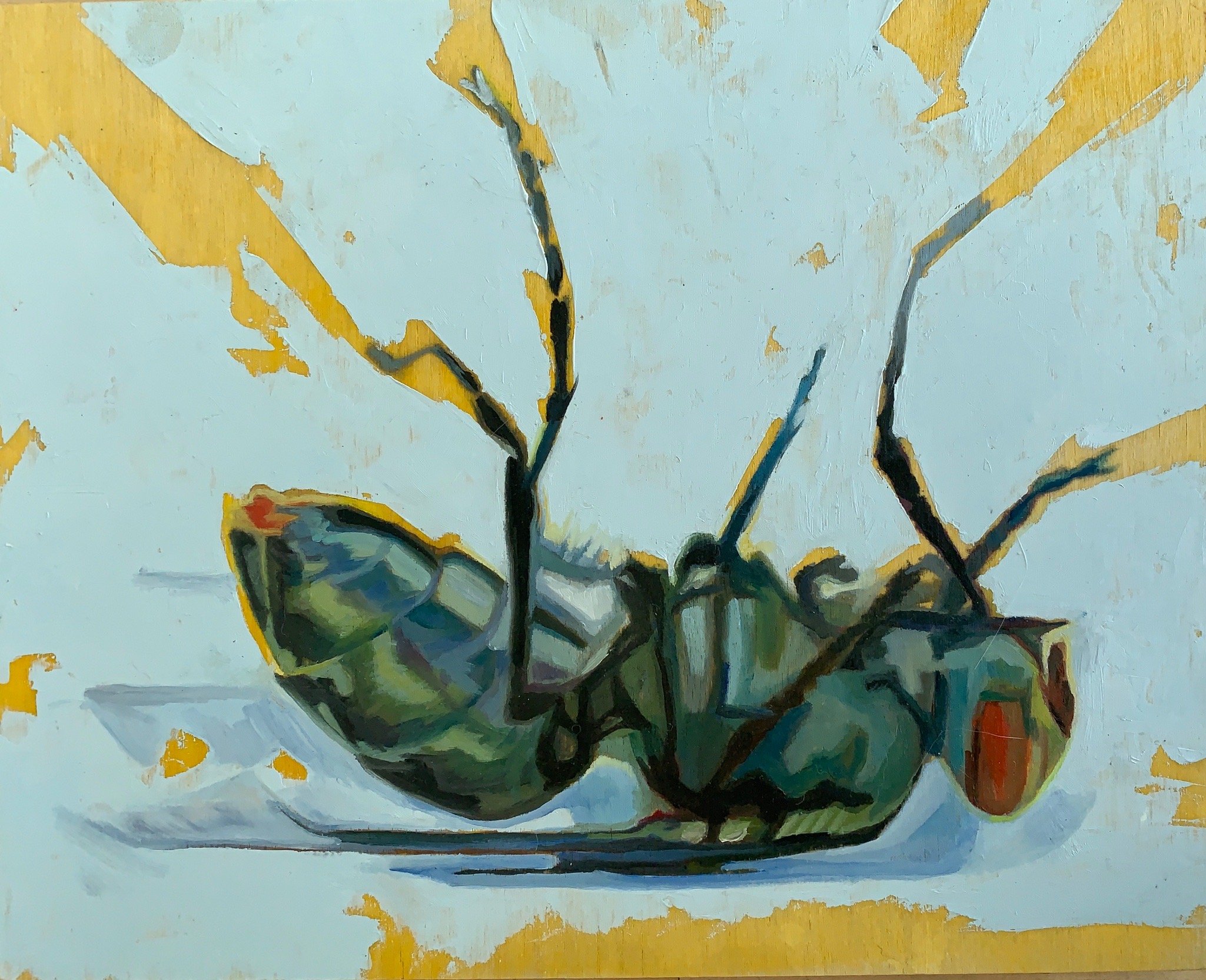 Image 1 of 1
Image 1 of 1


Forager bee, light pink on yellow
8 x 10 inches
oil on wood
2019
Foragers leave the hive for several reasons, and they all have to do with food. The most commonly known reasons they leave their hive is to collect nectar. Foragers stop at hundreds of flowers on an average foraging trip. While there, they collect nectar to bring back to the hive for processing into honey. Honey is the primary resource that bees make, and it is the substance that sustains them throughout the long, cold winter. So, needless to say, nectar is vitally important to the survival of bees!
8 x 10 inches
oil on wood
2019
Foragers leave the hive for several reasons, and they all have to do with food. The most commonly known reasons they leave their hive is to collect nectar. Foragers stop at hundreds of flowers on an average foraging trip. While there, they collect nectar to bring back to the hive for processing into honey. Honey is the primary resource that bees make, and it is the substance that sustains them throughout the long, cold winter. So, needless to say, nectar is vitally important to the survival of bees!










